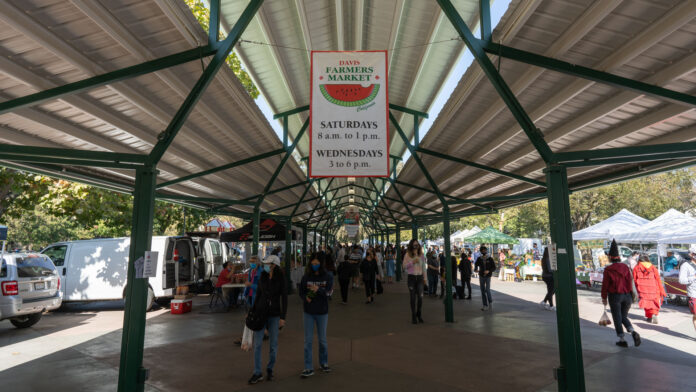Although risk of Salmonella and generic E. coli is low, researchers still emphasize good food safety practices
A recent study published by UC Davis researchers in the Journal of Food Protection found low food safety risk at Northern California farmers markets in terms of exposure to harmful bacteria. The study looked at the prevalence of foodborne pathogens such as Salmonella and Escherichia coli, and found that produce and meat sold at the markets are relatively safe. Researchers, however, still urge caution and good food safety practices.
The study was conducted with data from the California Farmers Market Directory and the U.S. Department of Agriculture (USDA) Local Food Directory. This data included samples from 44 certified farmers markets in Northern California that sold produce, meat or both. Across a selection of 44 farmers markets, 51 vendors sold meat, 41 vendors sold produce and one vendor sold both. They collected 338 samples across the 93 vendors between February and July 2018. The selections were based on which targeted products, such as meat products, leafy greens, root vegetables and fruits, were available there.
The study shows that less than 2% of meat products tested positive for Salmonella while none of the produce did. Additionally, 31.3% of produce tested positive for generic E. coli. Not all E. coli is harmful, and the generic E. coli that was detected is not a pathogen. Alda Pires, a co-author of this paper and the associated extension specialist for urban and agricultural food safety at UC Davis, explained the distinction.
“It is a generic bacteria and is an indicator of contamination, which is different from the pathogenic bacteria E. coli O157 that people might remember from different outbreaks,” Pires said.
According to Pires, the findings show that it is fairly safe to consume products from farmers markets in Northern California. The 31.3% contamination for generic E. coli may seem high, but it is in relatively small concentrations.
“There is very low risk compared to other studies, so it’s really good news for farmers markets when you compare to other studies,” Pires said. “Although a small sample size, it reflects a low risk of contamination of those products.”
Despite the otherwise low food safety risk from produce and meat at farmers markets, Pires said that consumers should abide by good practices when buying, transporting and cooking their food.
“Specifically, when preparing the food, and you are preparing meat products and vegetables, just follow the CDC guidelines and avoid cross contamination,” Pires said. “[For example] use different cutting boards, don’t wash your chicken and so on.”
Linda Harris, a specialist in cooperative extension in the department of food and science technology, lays out a series of practices to make sure food is safe to consume. Both consumers and vendors, at large and small farmers markets, should pay attention to the cleanliness of the products. They should also make sure that raw and processed meats are kept at cold temperatures, including when transporting the meat back home and especially during the summer months.
As a specialist in cooperative extension, Harris works with various individuals in the community, such as growers, processors, consumers and regulators in the state and federal government on food safety.
“My interaction with these groups differs based on their needs but can include responding to an individual’s question, [providing] information on our website for more frequently asked questions and topics that require more in depth resources, online training [and] presentations at various public meetings,” Harris said via email. “The types of information might range from information on how to comply with state and federal food safety regulations to understanding approaches to building food safety into everyday practices.”
The University of California Food Safety website from Harris and Dr. Erin DiCaprio includes all these important resources to educate and empower individuals across the supply chain about food safety. Their resources cover food safety topics, spanning from food safety after natural disasters to food safety practices during COVID-19.
Shopping locally at farmers markets has grown in popularity among consumers. The findings from this study are increasingly relevant in providing shoppers with crucial food safety information.
“There is a great interest to buy local, sustainable and organic products,” Pires said. “In my personal opinion, the consumers [want] to be closer to the farmer and know where their food is coming from and that reflects in their preference, where they get their products.”
Written by: Simran Kalkat — science@theaggie.org




